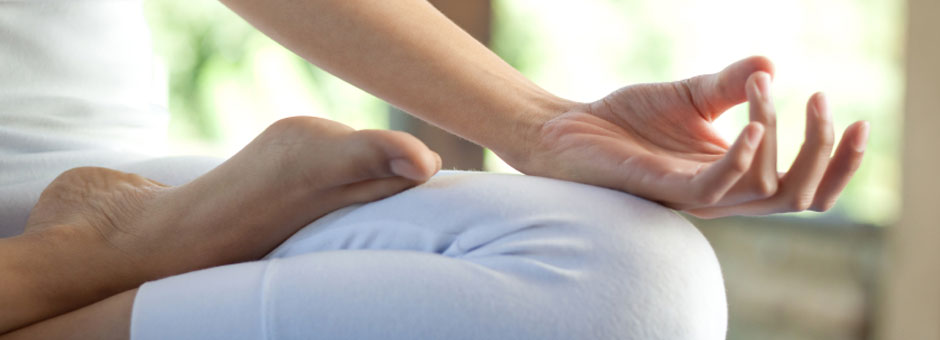Yoga for Students
It’s the hot trend, it has come a while back and decided to stick around: you’ve heard Madonna talk about it in her quasi-cockney accent; you’ve seen Sting recite his lines while in a handstand or some other wonderful bend. Aside from which, your coffee and pro-plus addiction is in full swing and you need something relaxing to balance it out. And with your partying/lectures/illicit-one-night-stand, some deep breathing might help, especially if you put down that cigarette and get out of that nightclub. Plus, ever since your new year resolution came to a full stop, you’re hamstrings are somewhat tight and the one arm is slightly over worked after lifting all the cheap vodka-cranberry or that nasty pint of lager, every night of the week.
Still, you’re not sure exactly what yoga means, or exactly what it will require of you. If you’re are bloke then you’d rather stick to pumping weights incorrectly and of-course not forgetting the ladies spending endless hours on the sitting on abductor machine. Well, let’s see if we can help clear up some misconceptions and get you on the road to your first handstand.
Well you see it all started a long time ago. It only became fashionable in the last 40 years or so. Yoga first popped up more than 3,000 years ago in what we now call India. The word “yoga” comes from the Sanskrit word “yuj,” which means “to bind, join, attach, and yoke.” So now you’re thinking: “Am I going to relax, or am I going to start crochet?!” Calm down, dammit! This Yoga stuff is about relaaaaaaaaxing. See, “yuj” also means “union, to direct and concentrate one’s attention on, to use and apply.” In other words, yoga is about concentrating on your mind and body to bind yourself to God. It’s about disciplining yourself to balance your mind, soul, and emotions, so that you can connect with your individual spirit, which is in turn part of the Supreme Universal Spirit (“Paramatma,” a.k.a. God). It’s about focusing your energy into constructive channels. And the name of an individual who follows the teachings of yoga is known as a “yogi.” You probably have a newfound respect for the spirituality of our pic-i-nic basket-stealing friend.
As there are many styles of dance, so are there many forms of yoga. In fact, a new one might be developing right now, as a teacher puts his/her own stamp on a specific technique. Current popular styles include (but are not limited to):
Gentle yoga, which is sometimes also called by the generic name “hatha yoga”. In Gentle yoga, the focus is on long stretches and flexibility, with slow, deep breathing (yogic breathing is known as “Pranayama”). This can be very soothing for the mind — it is the kind of mellow style most people picture when they think of yoga.
Kundalini yoga, which works on the premise that the body has eight “chakras,” and through use of “breath of fire” (rapid breathing), one can heat up the body from the bottom up, eventually “raising kundalini” to achieve a feeling of high enlightenment.
Power yoga, which is also known by the Sanskrit term Vinyasa yoga (a “vinyasa” is a series of rapid movements which warm up the body all over). This is a very active form of yoga, in which a person moves quickly through the poses (called “Asanas”), not holding them as long as in other styles. It is virtually guaranteed that you will sweat a lot in this; it is not for the faint of heart and gives a real challenge to the muscles.
We recommend beginning your practice in a class and buying a book afterward for home study, reason being that you wouldn’t want to risk repeatedly doing something incorrectly and eventually getting hurt. Plus, a class is a great way to feel the yoga “vibe,” or to ask your teacher about any physical concerns or limitations you might have.
At first, you will want to shop around to find out what styles, schools and teachers are right for you. Many health clubs offer yoga, so do check if yours has a class you can try out. However, you may also like the quieter, pure-yoga feeling of a specific yoga school.
It would be impossible to list every single yoga class in the city. We simply recommend that you go to your local gym and ask where you can find a good one. And if you don’t belong to a gym (or even if you do), you should also ask your doctor to recommend a yoga class. Doctors, being slightly interested in health, will have plenty of recommendations for you.
Many teachers offer private lessons, so feel free to ask if you want one-on-one attention or if there’s some pose you feel you just can’t “get.” With the right amount of dedication, it is all within your reach. So, consider yourself having taken the first step toward flexibility, strength, inner peace, and we hope some kick-ass karma. Now get thee to a yoga class.
Ommmmmmmmmmmmmmmm………..


